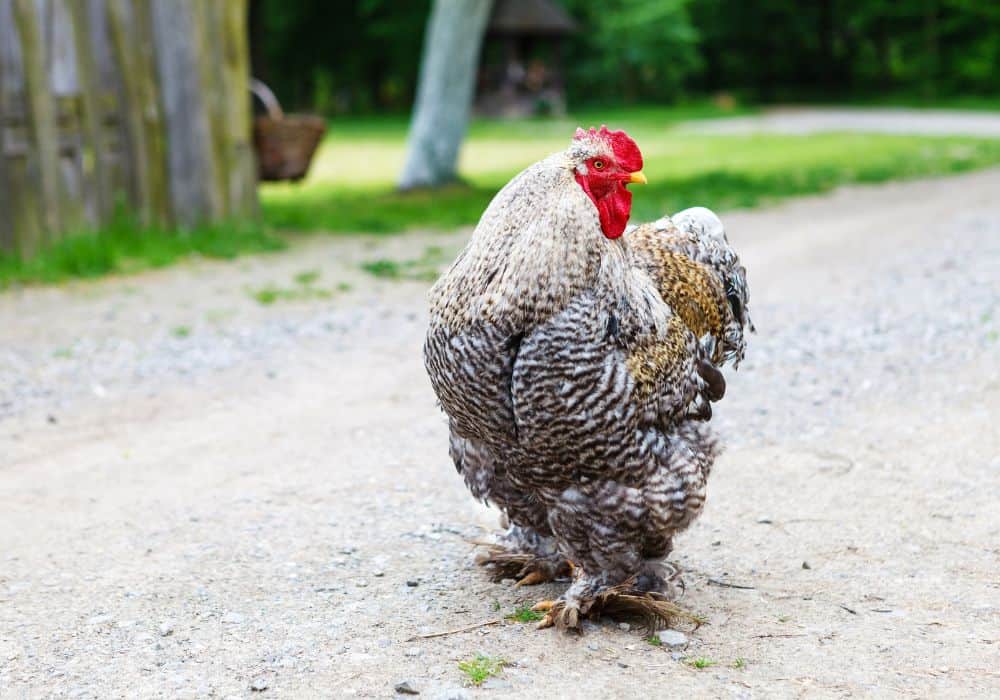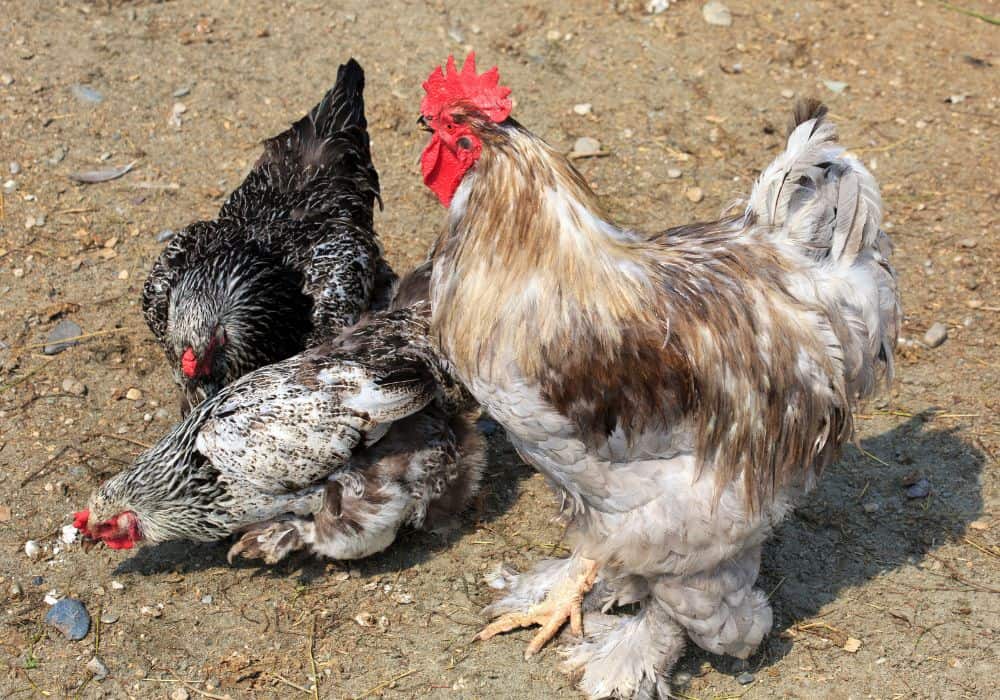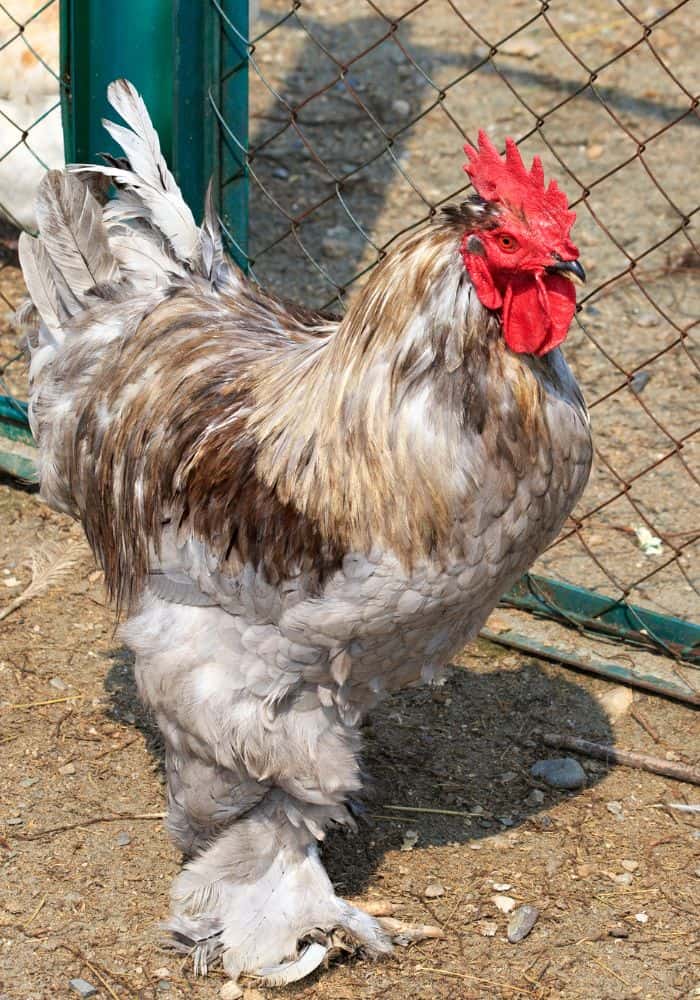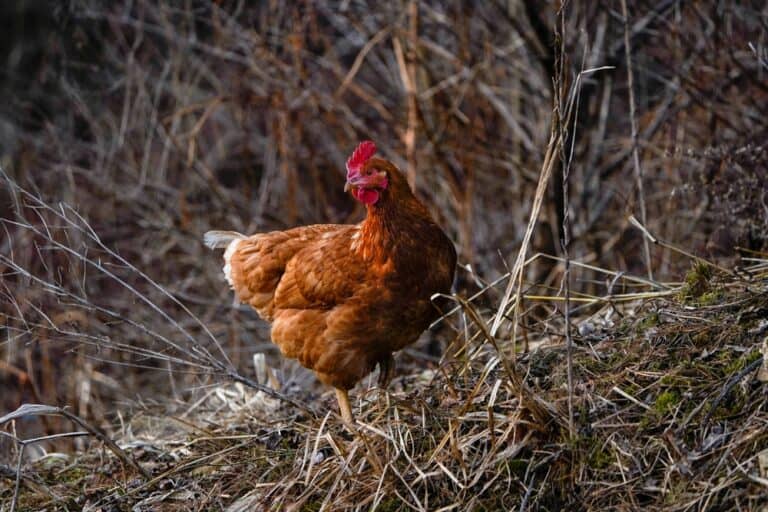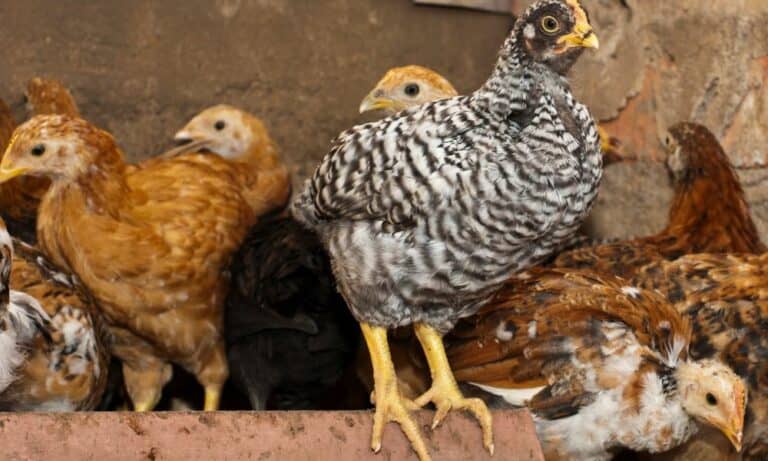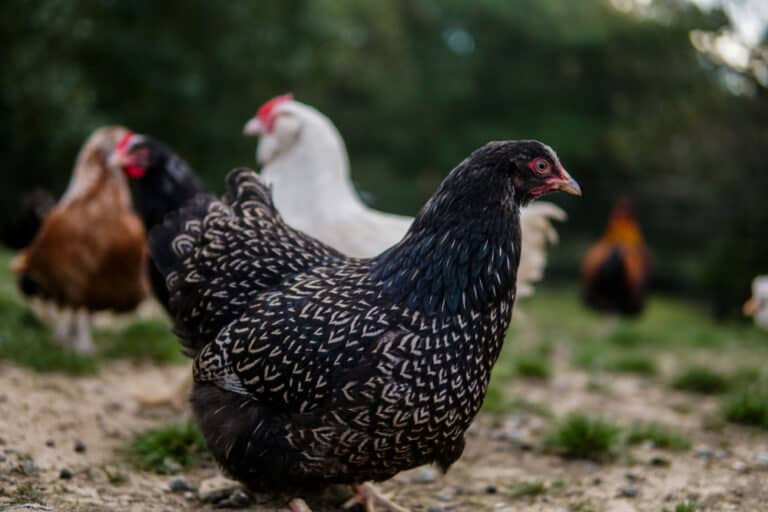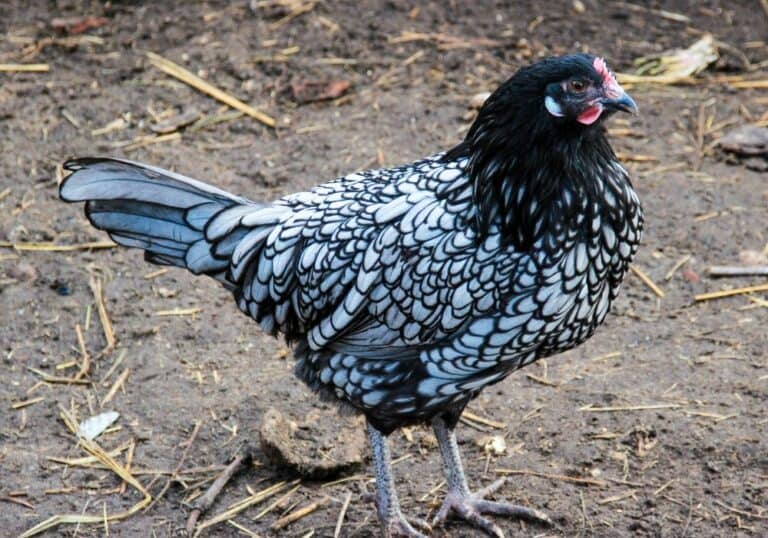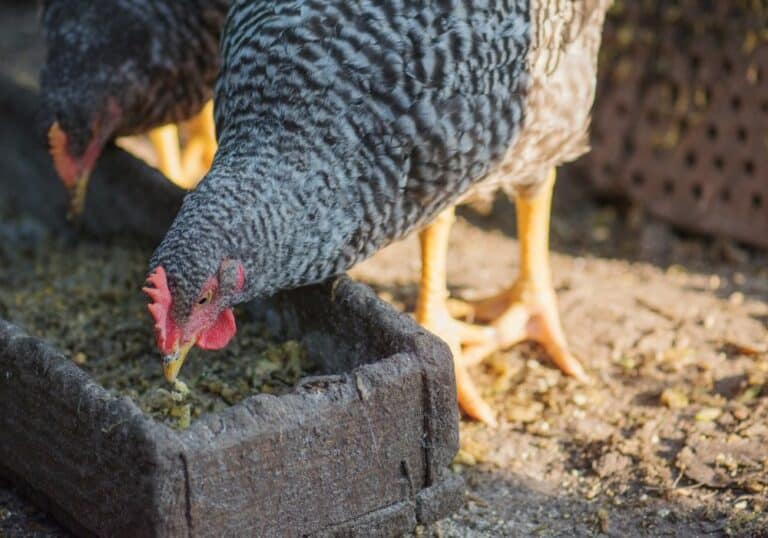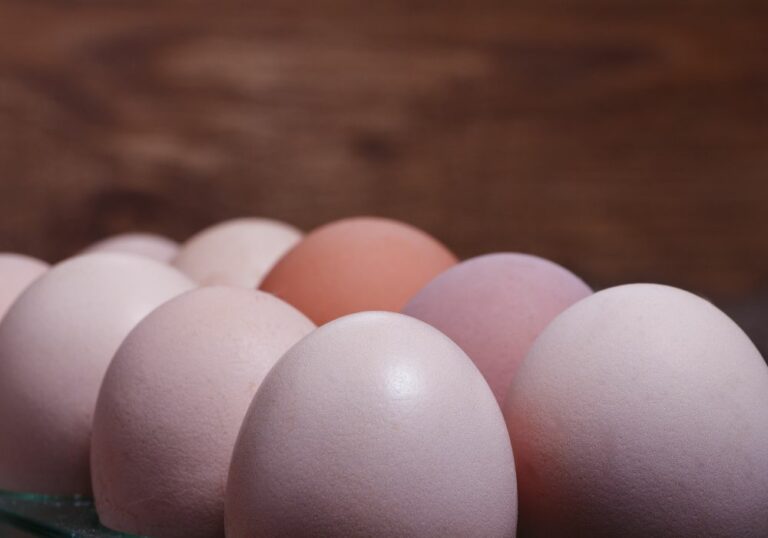Are you considering adding Cochin chickens to your backyard chicken coop? Like all chicken breeds, the Cochins have their own personalities and needs. To ensure you have happy, egg-producing chickens, you need to know the characteristics of the breed and how to set up their habitat.
In this article, we explore the Cochin chicken breed from its appearance and personality to egg production and care. So before you add them to your flock, read on to better understand this unique chicken breed.
The History of the Cochin Chicken
Not all details of the Cochin chicken’s history are known but their ancestors, the Shanghai chickens, were first imported from China to the United Kingdom in the mid-1800s and presented to Queen Victoria. The original Cochins were known as Cochin-China in the UK.
The first Cochins imported to the UK looked very different from the Cochins today. They were more like game fowls, tall and rangy, not unlike the Malay chickens. With breeders practicing selective breeding, the chickens changed in appearance.
However, the breeding process also reduced their egg-laying abilities and eventually led to the meat losing its flavor. While these feathered friends are still kept for their eggs, they are also popular as pet or exhibition and ornamental chickens.
What Are Cochin Chickens Like?
The Cochins are lovable and cuddly chickens. They are reliable egg producers even if they produce fewer eggs than breeds such as the Ameraucana. These friendly chickens enjoy interaction with humans, which makes them great pets.
The Cochin’s Appearance
The Cochins are large birds and they look even bigger because of their fluffy feathers. They have full and soft feathering that extends all the way down their legs and even covers their feet and toes, except for the inner two toes.
Cochins have red ear lobes and wattles and a single comb, which is also red. Their eyes are yellow and the color of the beak varies from yellow to black. Generally, the darker the bird’s feathers, the darker its beak will be. Cochins’ wings are large but because they have large bodies, they can only manage to fly in short bursts.
Cochin hens weigh about 8.5 lbs and roosters 10-11 lbs. If you would prefer a smaller bird, then you could opt for a Cochin bantam variety called Pekin bantam with hens weighing 26 oz and roosters 30 oz.
There are thirteen recognized color varieties of the Cochin in America, including black, blue, partridge, gold-laced, buff, red, mottled, and birchen. A lavender Cochin also exists but the American Poultry Association has not recognized this color variety yet.
Cochin Breed Behavior
Cochins are known to be a mellow and laid-back breed who prefer to stay near their feeders rather than forage for their own food. However, they have a tendency to put on too much weight because of laziness. Encouraging them to free range will help to keep them at a healthy weight.
The hens are broody and because of this, you can give them any eggs to look after. They make great foster mothers and will look after abandoned baby chicks and even ducks and guinea fowl.
Their laid-back attitude can also lead them to get picked on if they are in a flock with more assertive breeds. It is best to combine them with other calm, non-combative breeds such as the Silkies or Polish that are less likely to peck them.
Cochins Make Great Pet Chickens
If you are looking for a chicken breed that can be a pet as well as give you some eggs, then Cochins are a great choice. Because they are so friendly, they can be trained to hop into your lap and eat from your hand. However, this training needs to start when they are still young chicks.
Cochins will even let children pick them up and cuddle them, which makes them a great choice if you have young children. Even the Cochin roosters are very mellow, but you should exercise caution having them near children until you are sure of their temperament.
Cochins as Egg Producers
If you are after chickens that will give you lots of eggs, then Cochins are not the best option. They will still give you eggs but not in the same numbers as other breeds that have been selectively bred for their egg-laying abilities.
Cochins are moderate egg layers and you can expect them to produce two or three eggs per week, which will be between 150 and 180 eggs in a year. Their eggs are medium-sized and brown. Hens will start laying eggs when they are eight months old.
How Much Noise Cochins Make
Cochin is a fairly quiet chicken breed. While all chickens will make some noise, especially when they are laying eggs, the Cochins are not likely to have loud outbursts. Because of this, they are a suitable choice for urban backyard chicken coops as they are less likely to disturb the neighbors.
Looking after Cochin Chickens
Cochins are good chickens for beginner chicken keepers because they are easygoing and easy to look after. They are happy as long as they have enough food to eat and don’t mind living in more confined spaces.
They are capable of handling colder temperatures thanks to their thick feathering. However, it can be a disadvantage during the summer heat. During the summer, they need to be provided with plenty of cool, shady areas where they can hide from the sun.
Cochin Healthcare
While the Cochins are a healthy breed, there are still some things you need to be aware of to maintain a healthy flock. You need to check them for lice and mites regularly because they like to hide among all the fluff and feathers. Some people choose to treat their Cochins for lice and mites routinely, others as needed.
Another Cochin chicken health issue is worms. If your Cochins are losing weight or seem lethargic, they may have worms. Obesity can also be an issue for these greedy eaters, so ensure you monitor their weight in either direction.
In colder conditions, Cochins are also prone to frostbite on their toes because snow easily sticks to their feathery feet. Try to keep their feet dry and clean and consider using sand in the chicken run because it is better for their feet.
Cochin Feed
When Cochins are young, they need a starter feed high in protein. You should look for feed that contains at least 20% protein. When they are 16 to 20 weeks old, you can transition them to 16% layer feed. When they are molting, increase the protein back up to 20% as this will help the feathers grow back quicker.
Because the Cochins love to eat, they will often keep eating as long as there is food left. To stop them from overeating and becoming obese, have a fixed feeding schedule and only give them what they need.
Setting up the Chicken Coop
The Cochins will need to have at least four square feet per chicken inside the coop. If you can provide them with more space, that is even better, especially if your Cochins live with more assertive breeds. Giving them plenty of space will help them to avoid chicken coop bullies.
They will need at least ten to twelve inches of roosting space, but again more is better as it will allow them to spread out during warm weather and help them keep cool. For nesting, standard 12 x 12-inch nesting boxes are the best to avoid double-bunking.
Chicken Run and Roaming
Even though the Cochins are more than happy just to hang around their feeder, it is important to give them space and time to roam. While they are not keen foragers, encouraging them to roam will give them the exercise they need.
Because of their large size, the Cochins move slowly and are more easily caught by predators than smaller chicken breeds. Therefore, it is important to keep your Cochins safe by creating a protective barrier between the chickens and their potential predators. A three-foot fence should be enough to keep them inside their run.
Are Cochins the Right Chickens for You?
If you are looking for chickens that can be cuddled and enjoy being around you, then Cochins can be a great choice. On the other hand, if you want chickens that will give you plenty of eggs, then Cochins will not be the best breed for you.
They are well suited for people with kids as they don’t mind a child picking them up and giving them a cuddle. When trained from a young age, they will be tame chickens that will eat from your hand and sit on your lap.
Cochins are also a great choice for people who like to exhibit their chickens. The cute Cochins with their fluffy appearance never fail to attract a crowd and, because they are so tolerant and easy to handle, they are ideal show chickens.
Conclusion
The Cochins are a beginner-friendly and easy-going chicken breed that enjoys interacting with people, including children. While they are not the most productive egg layers, they will still give two or three eggs most weeks.
We hope you now have a good understanding of Cochin chickens. If there is anything else you would like to know, you can write your question in the comments box.

